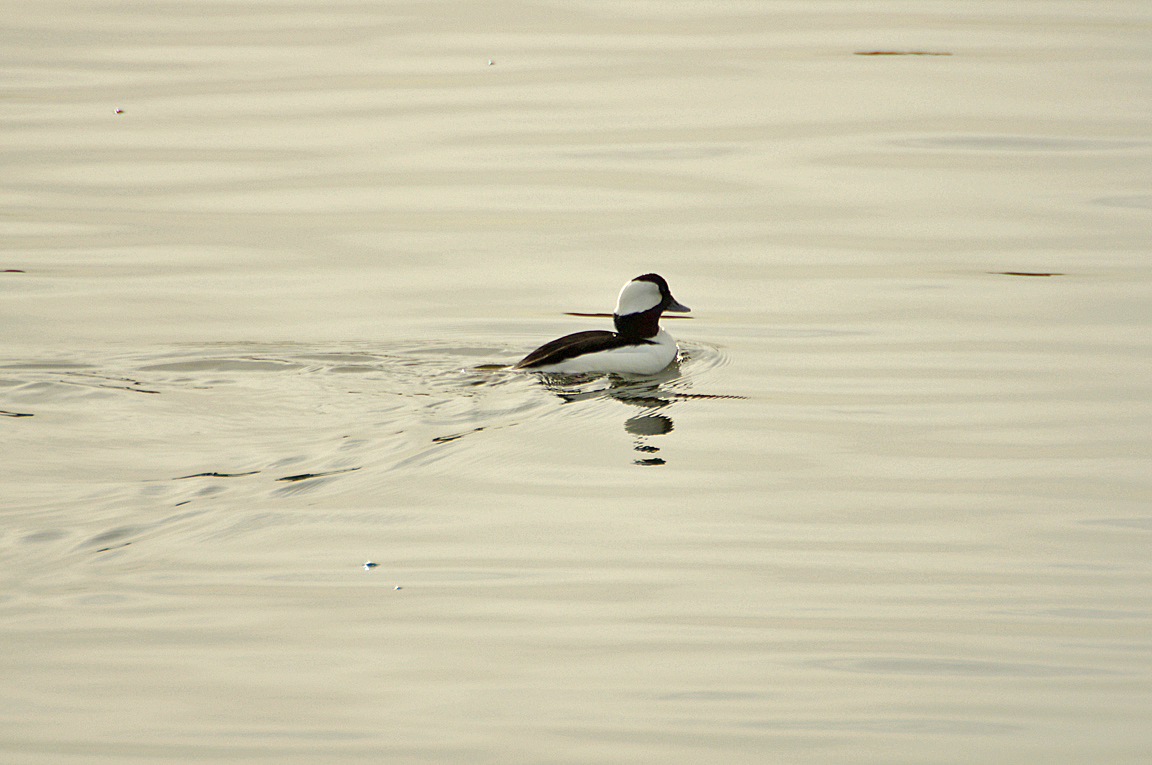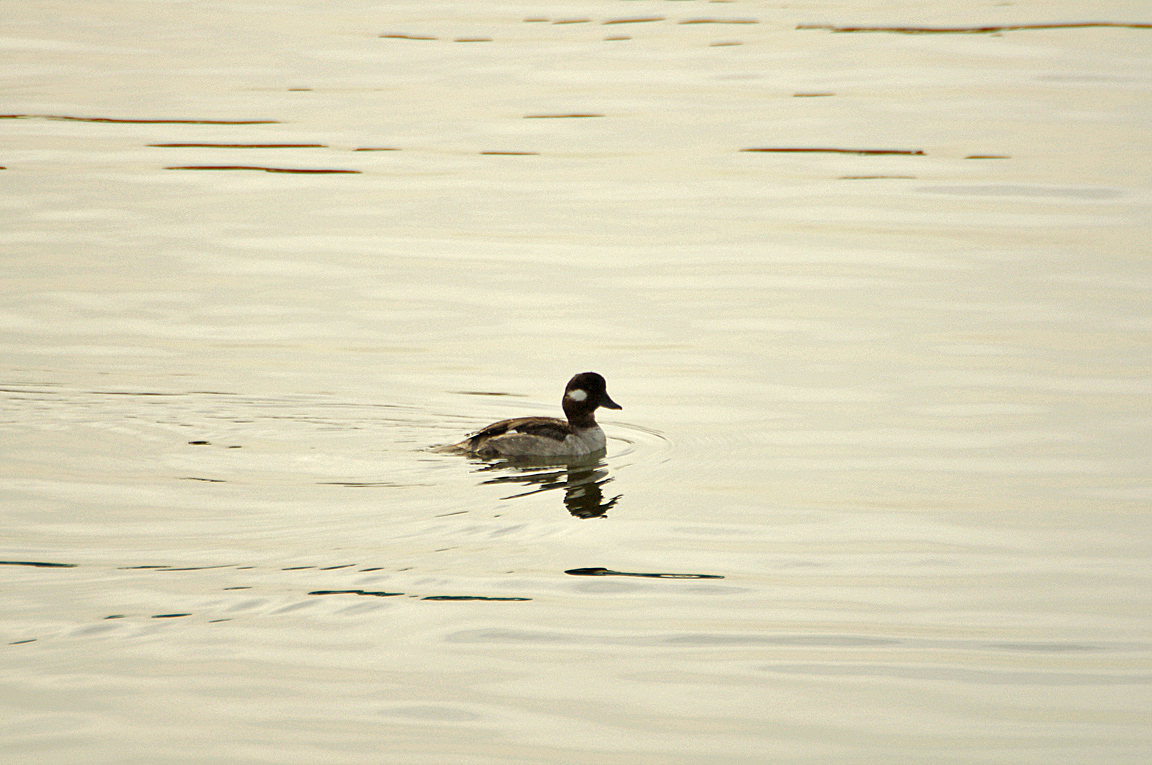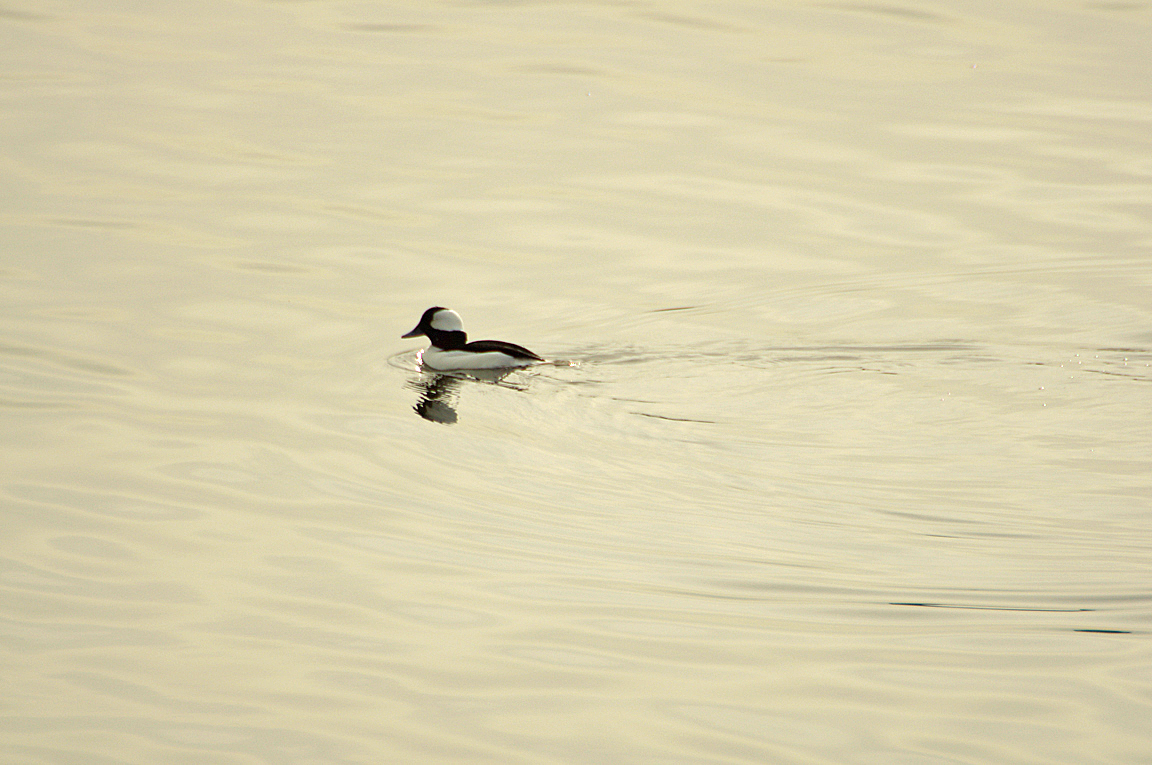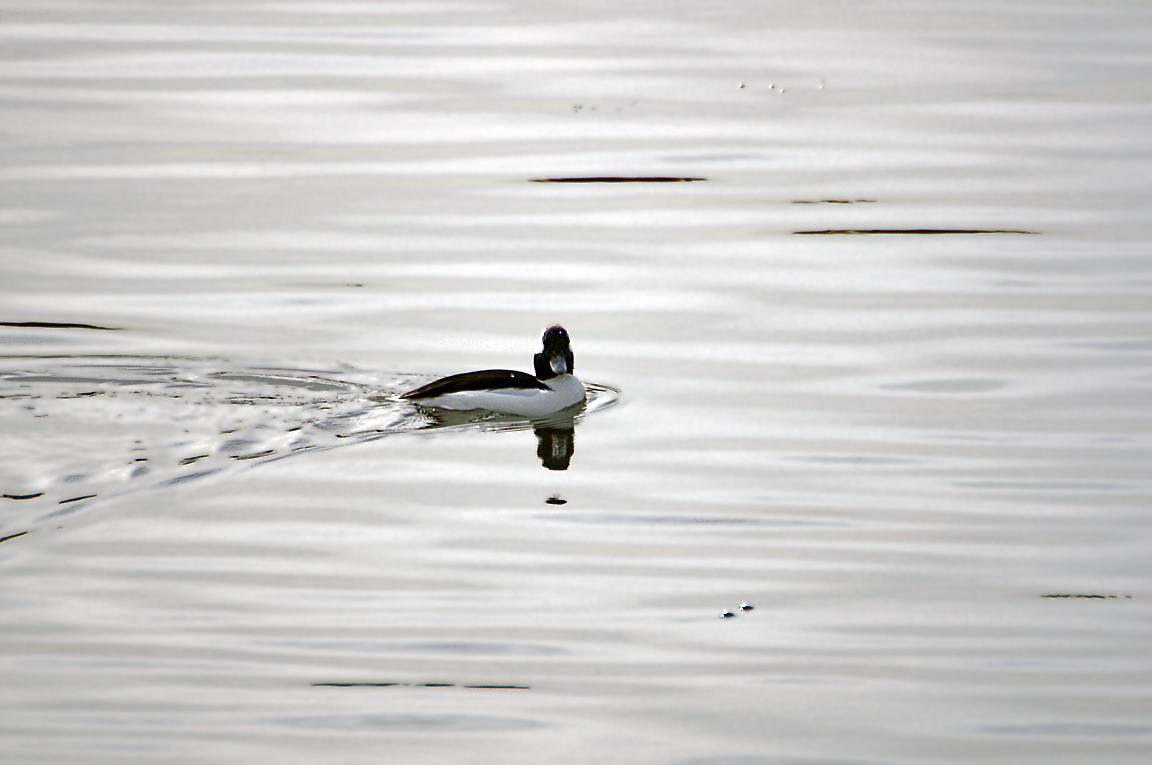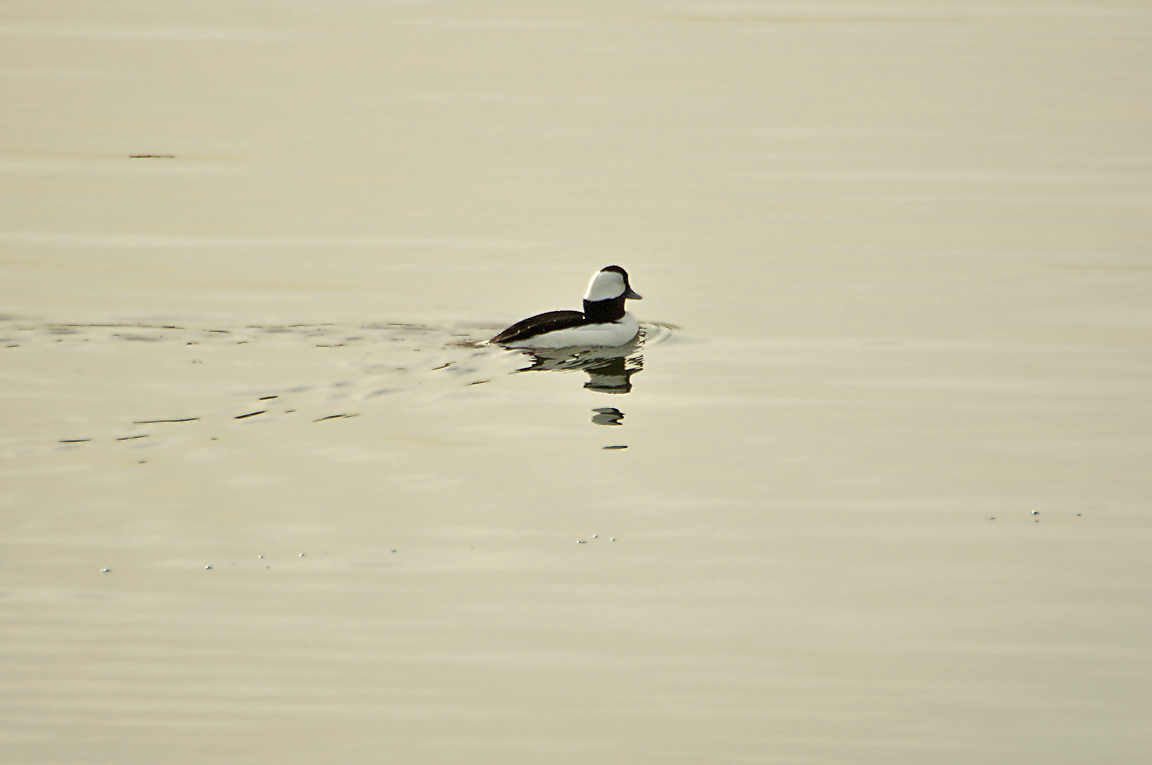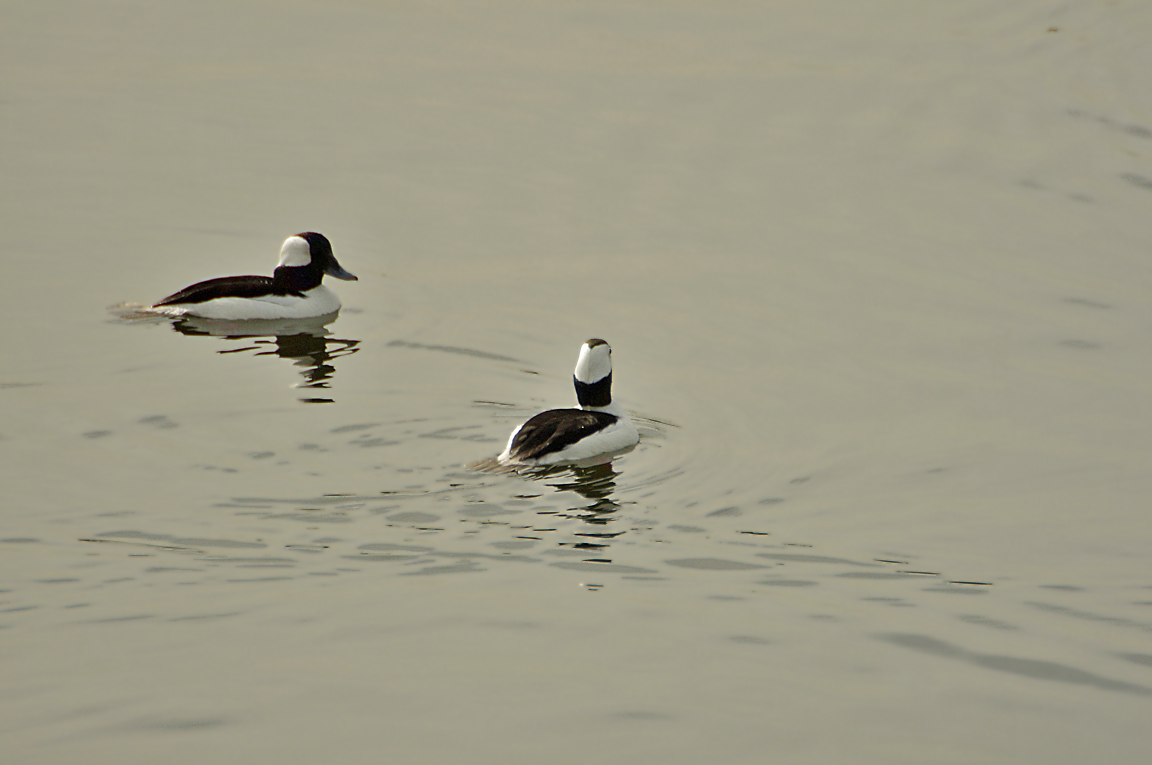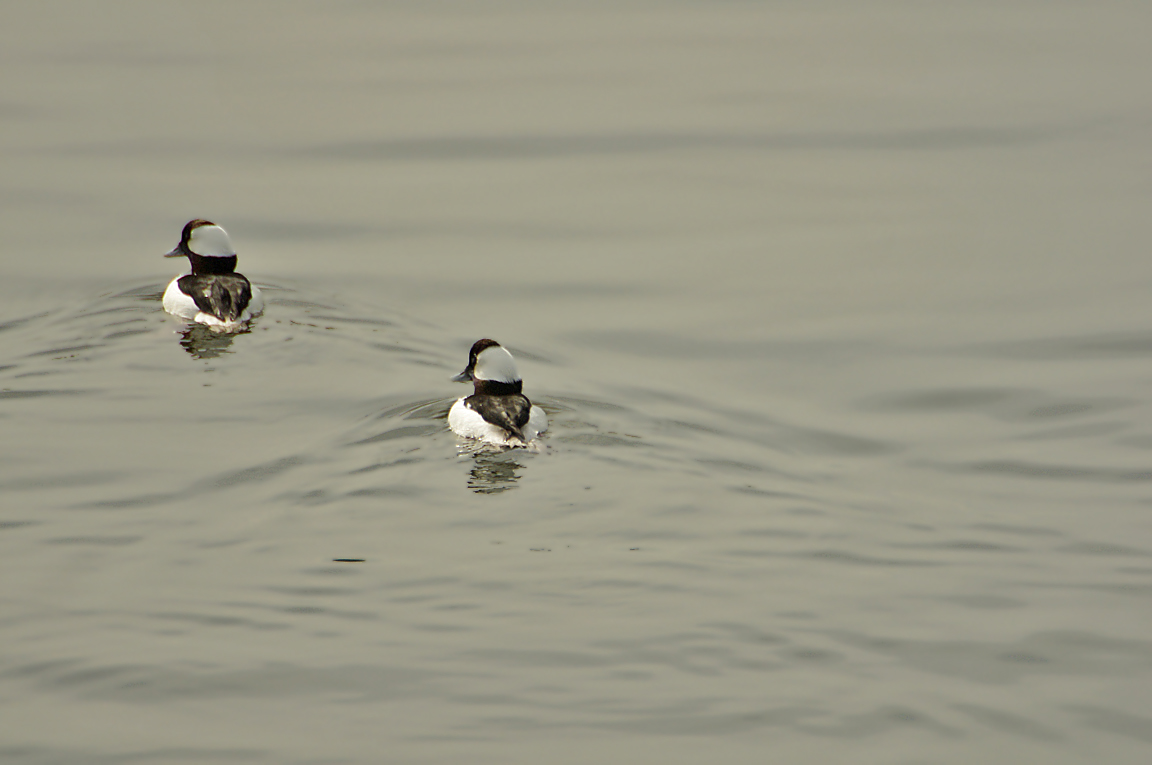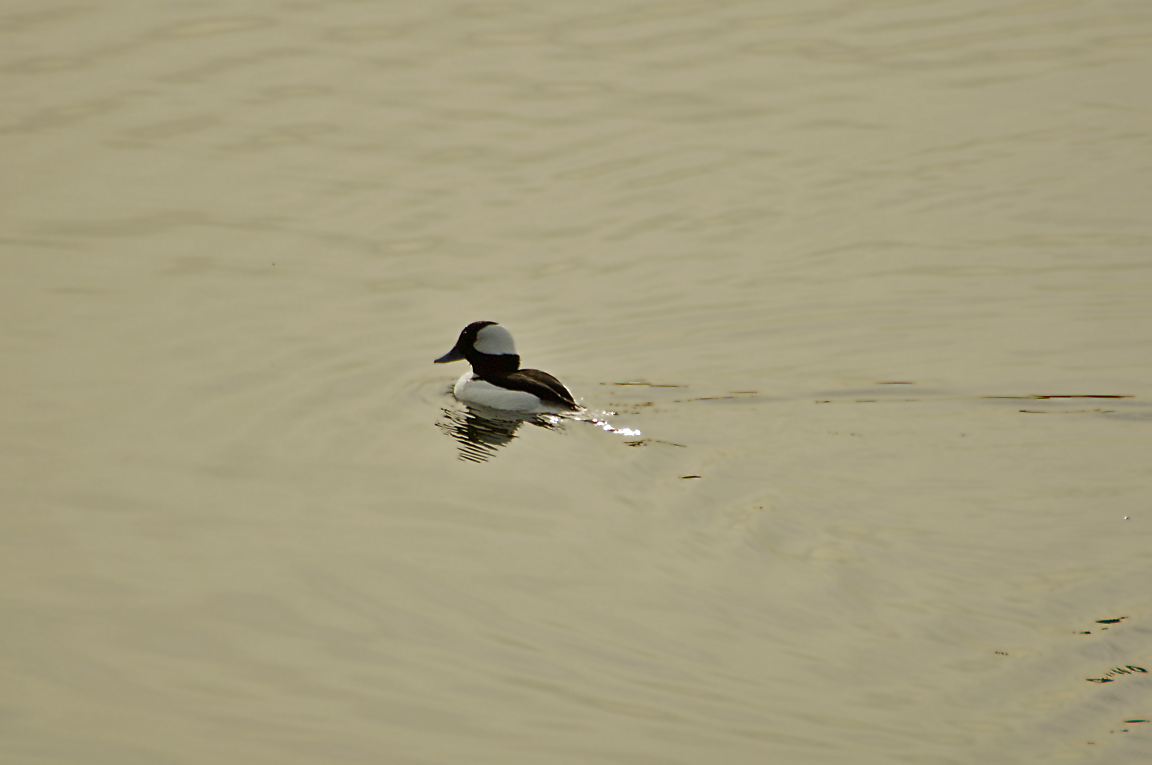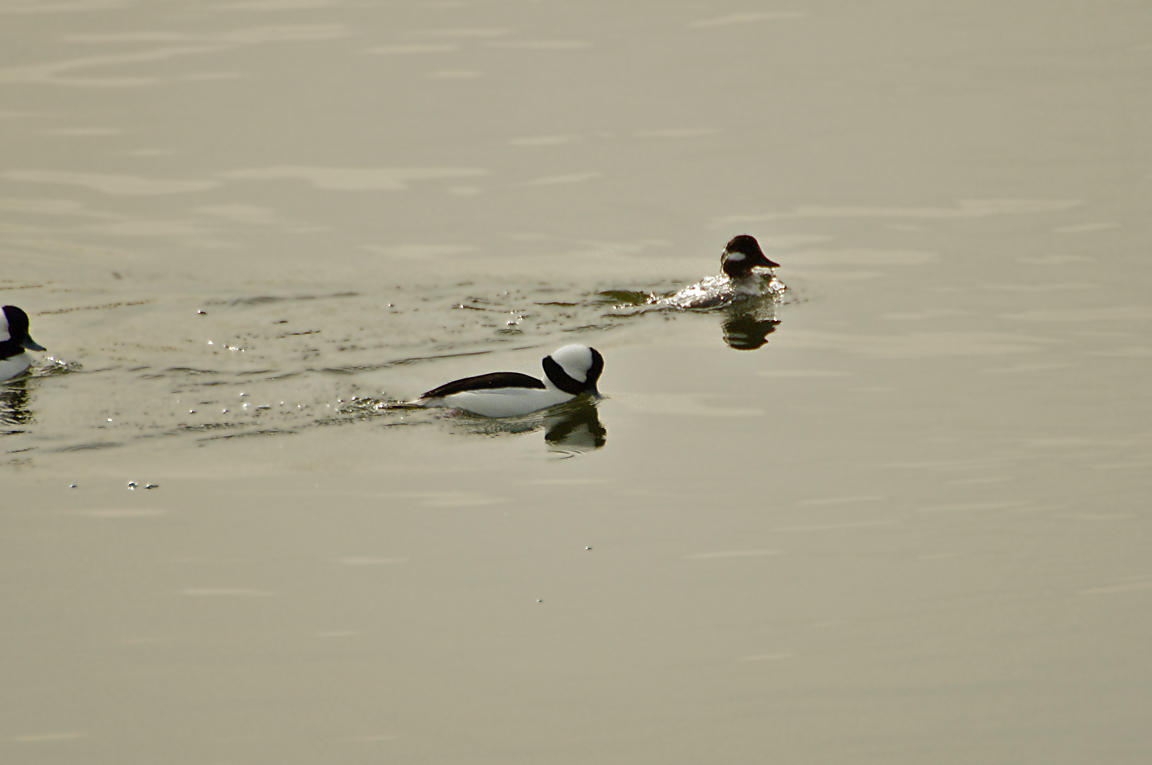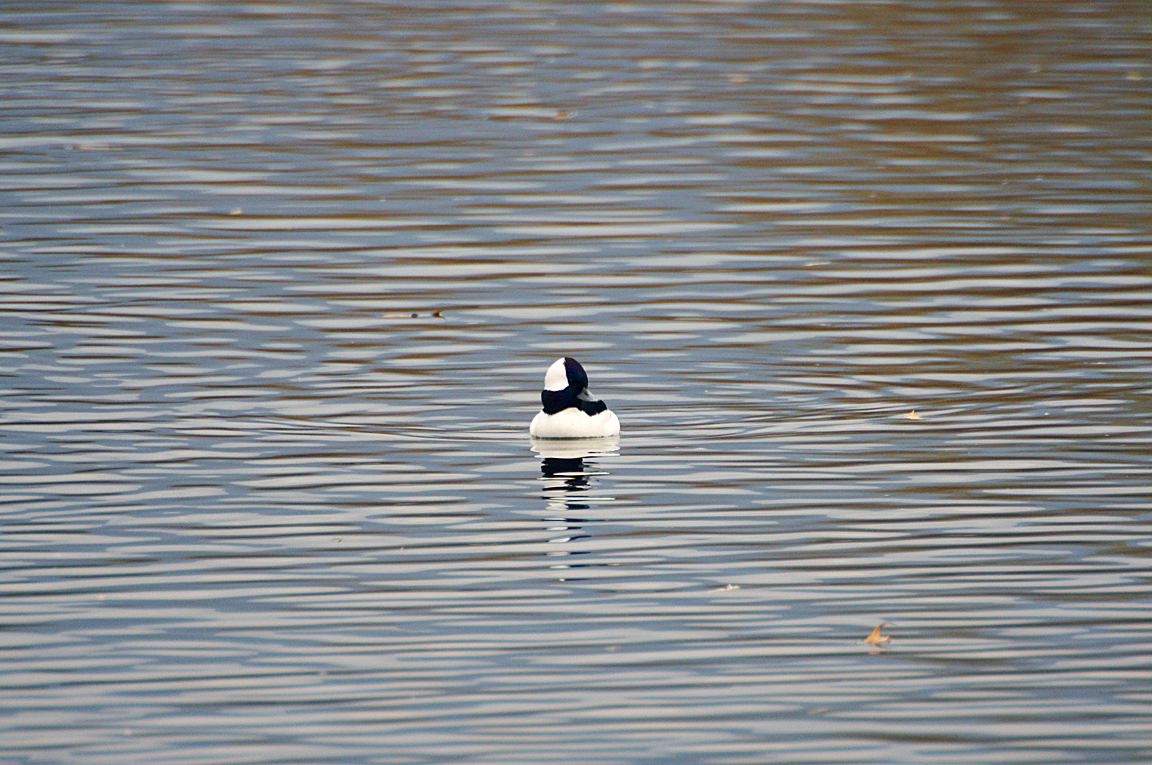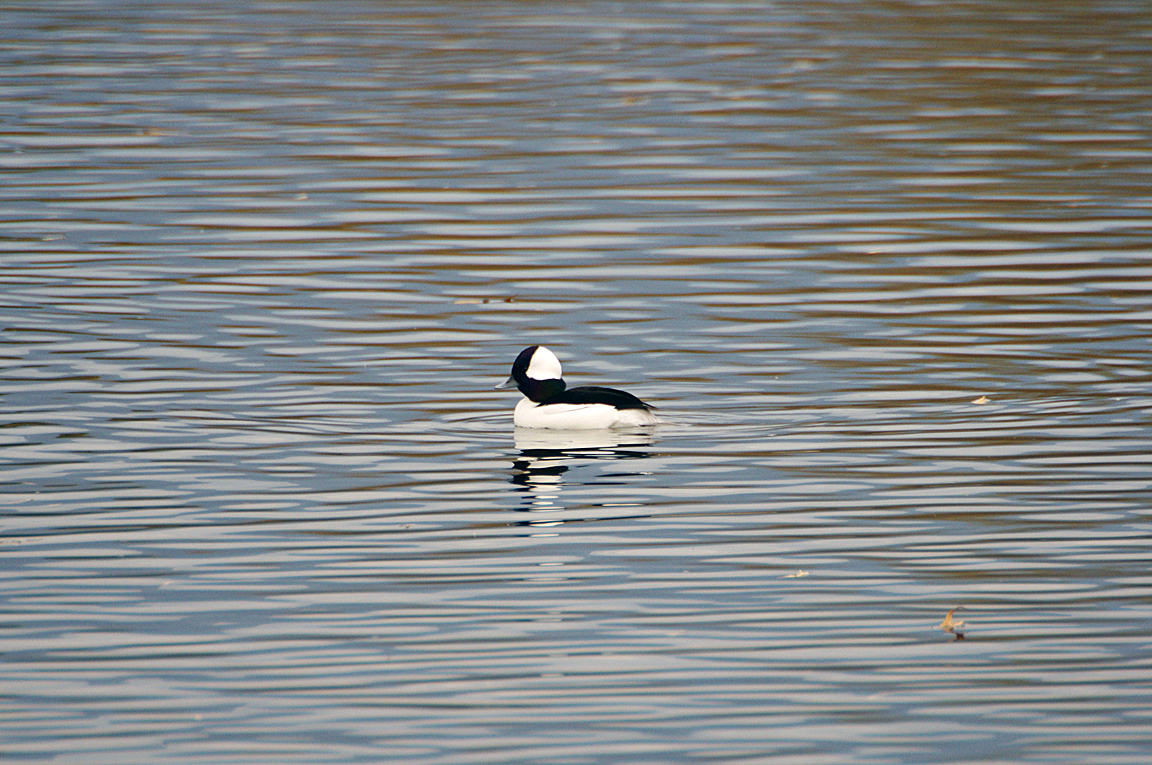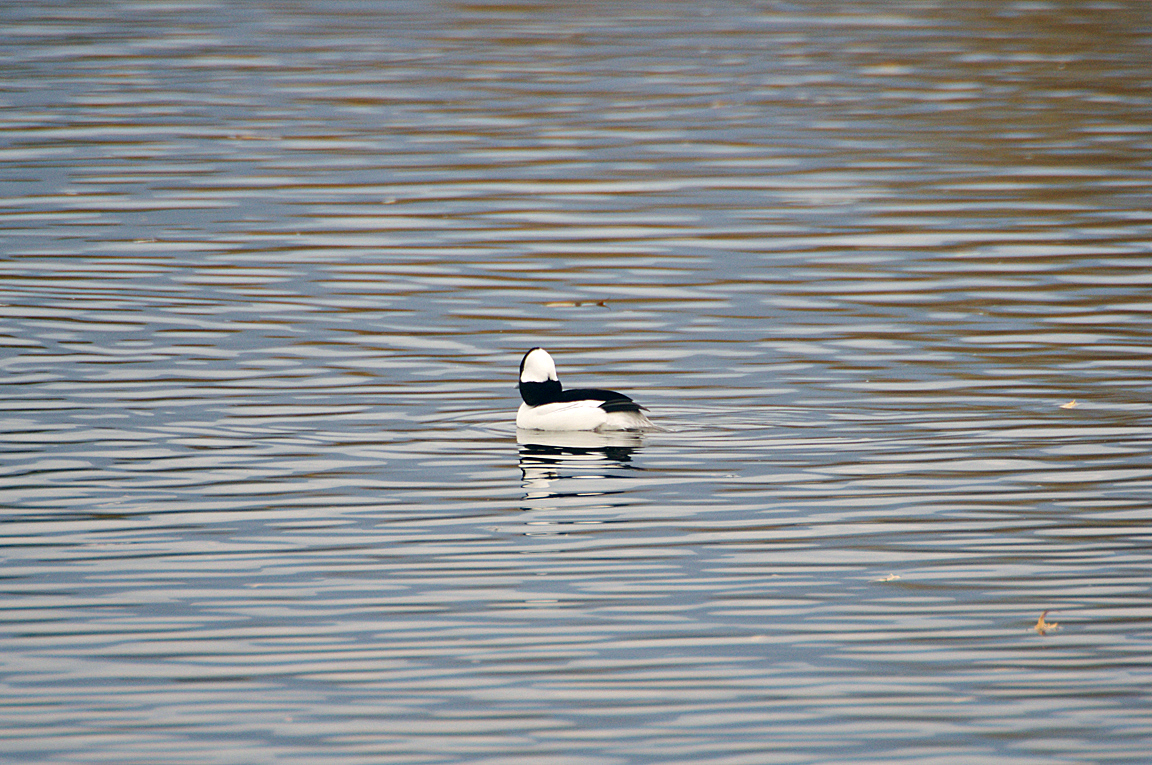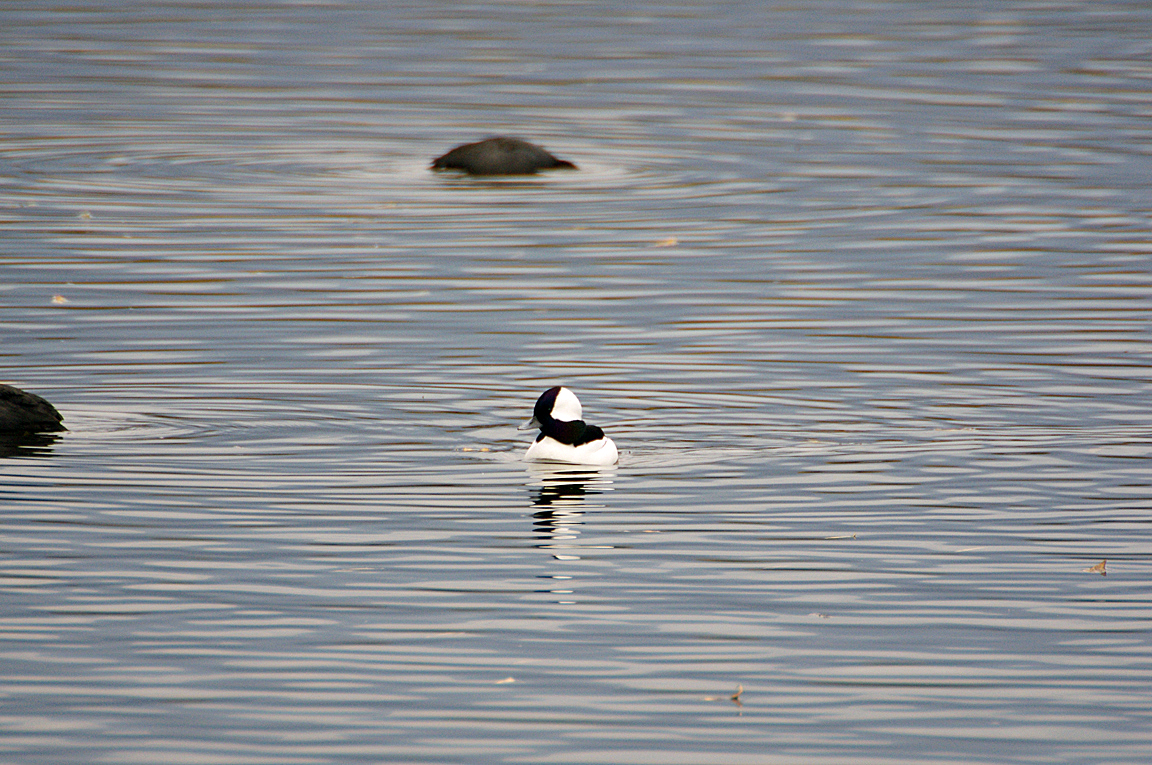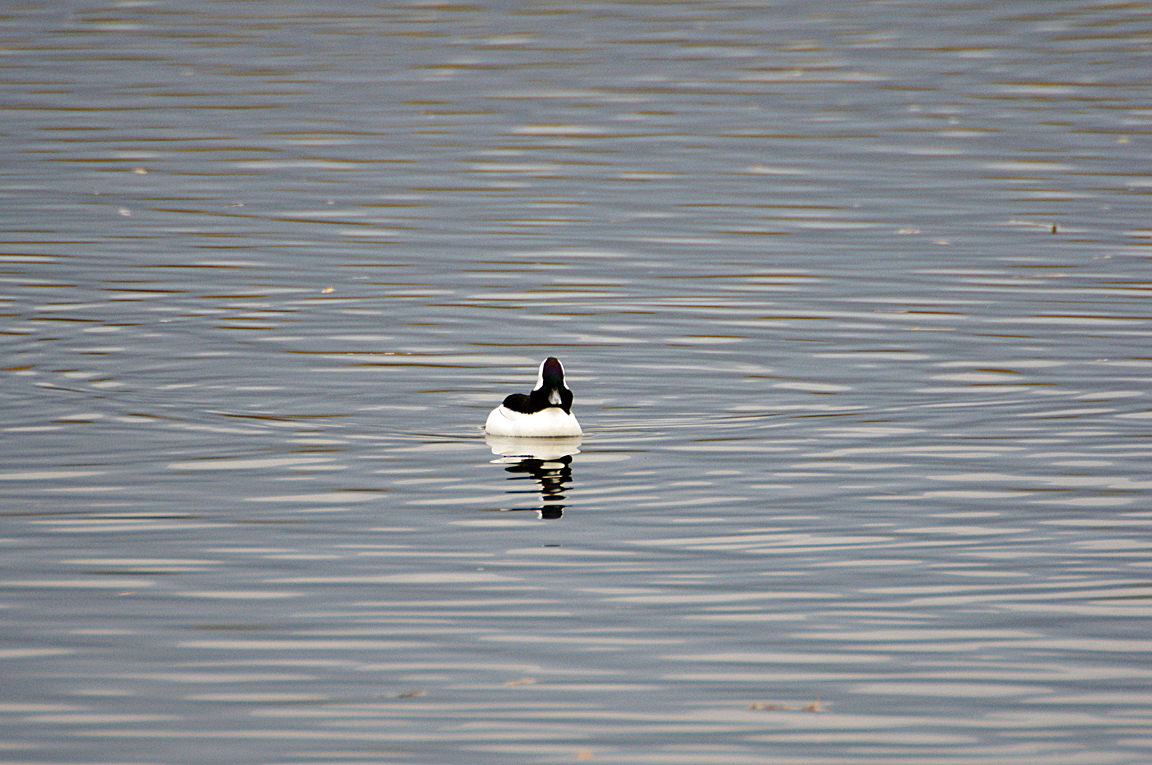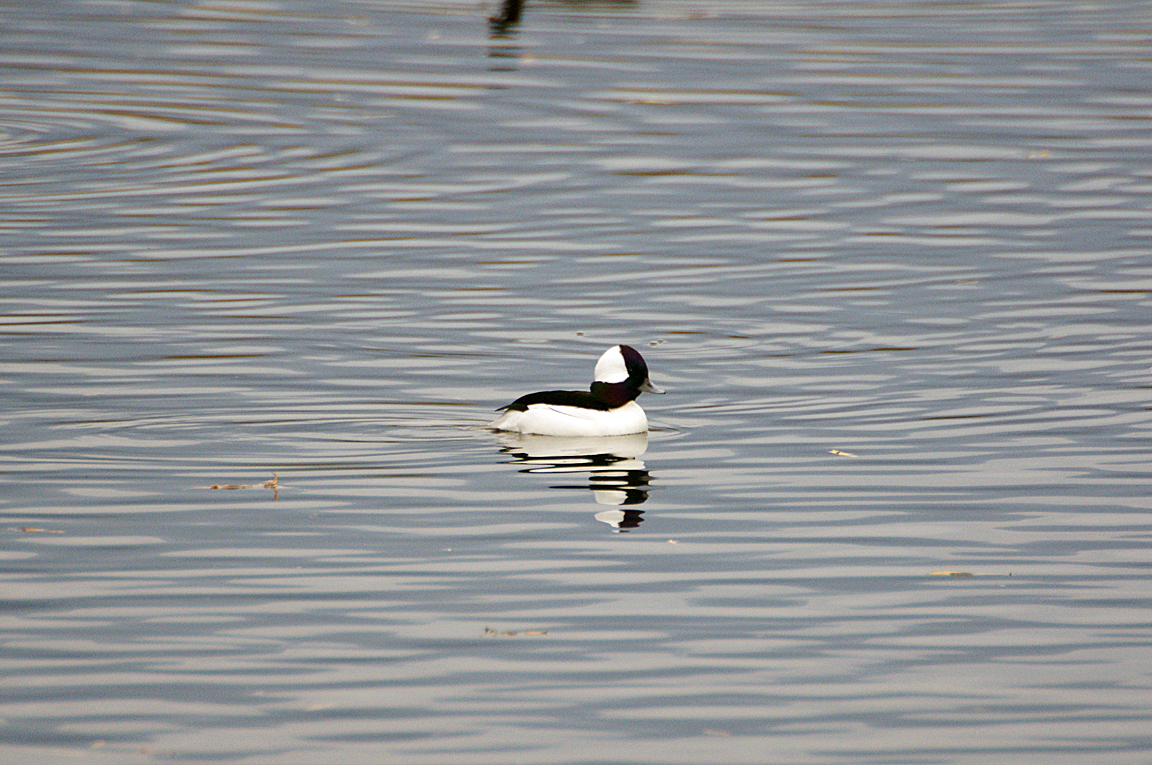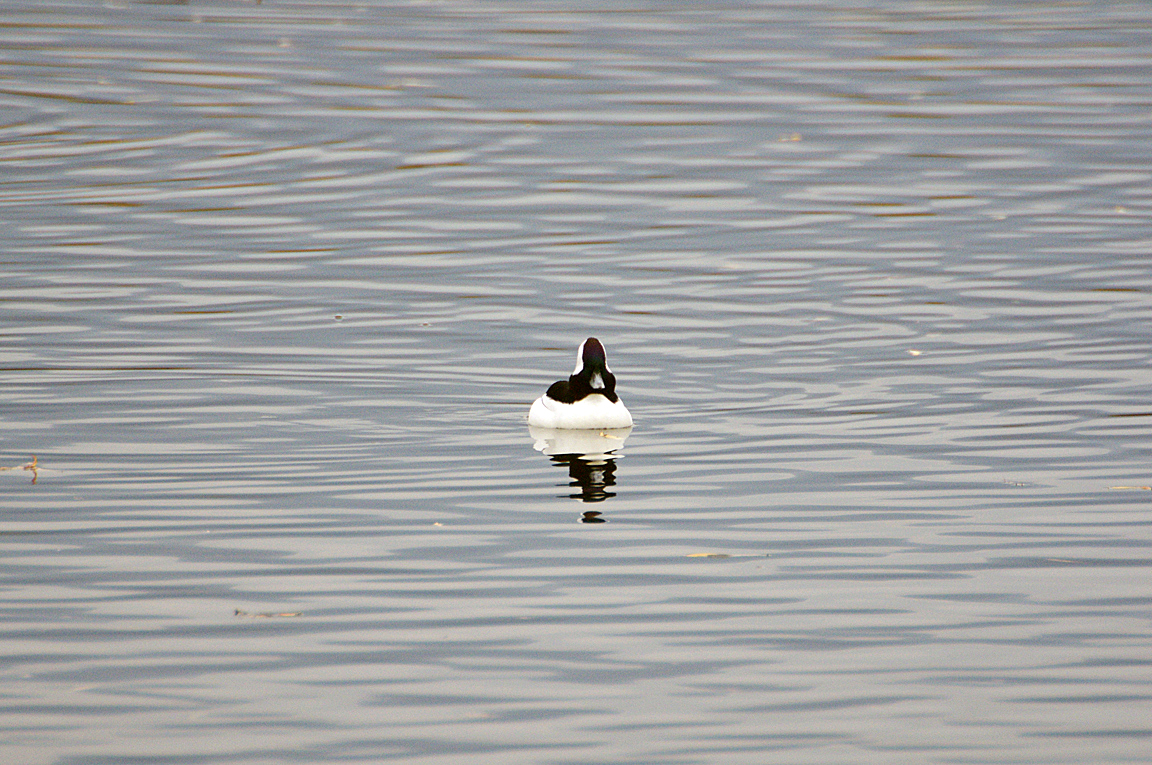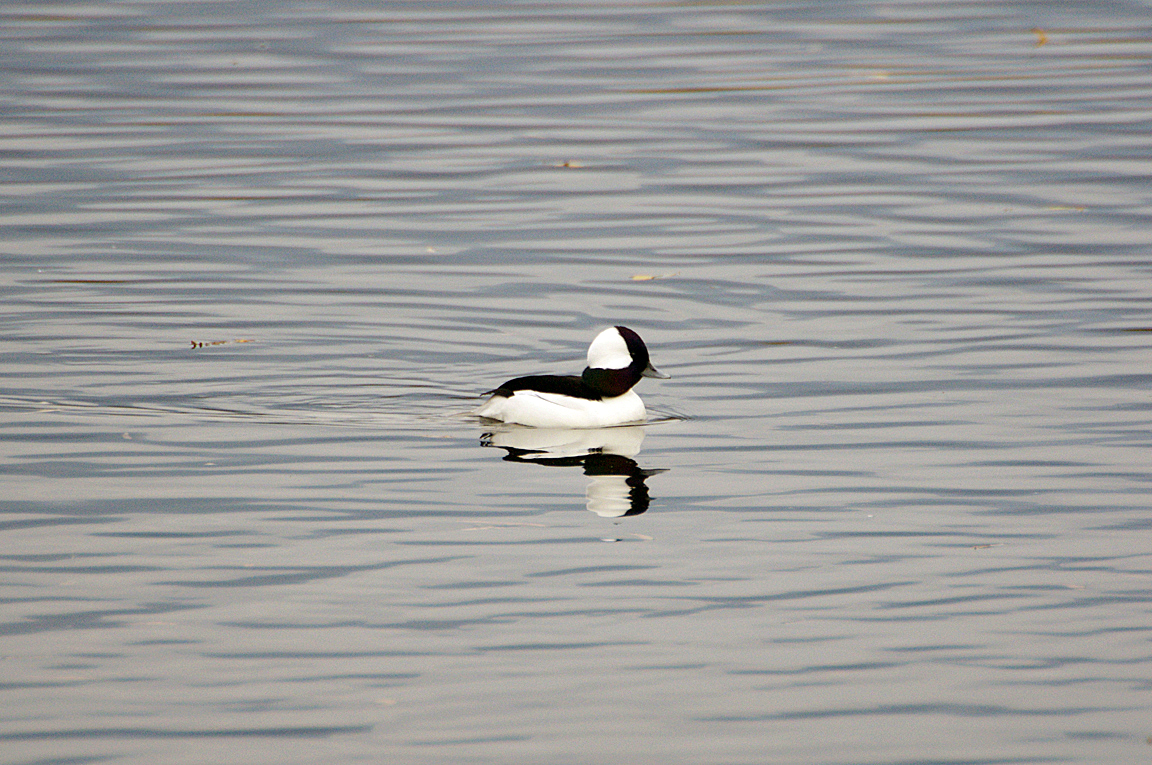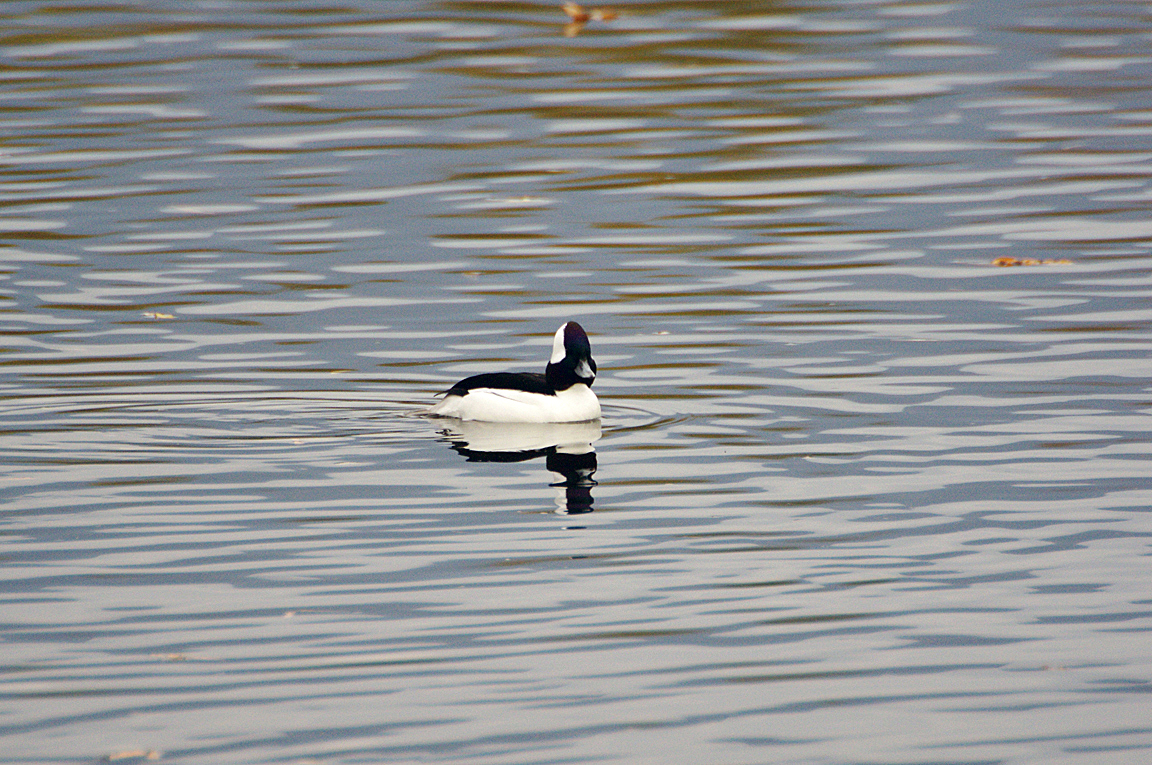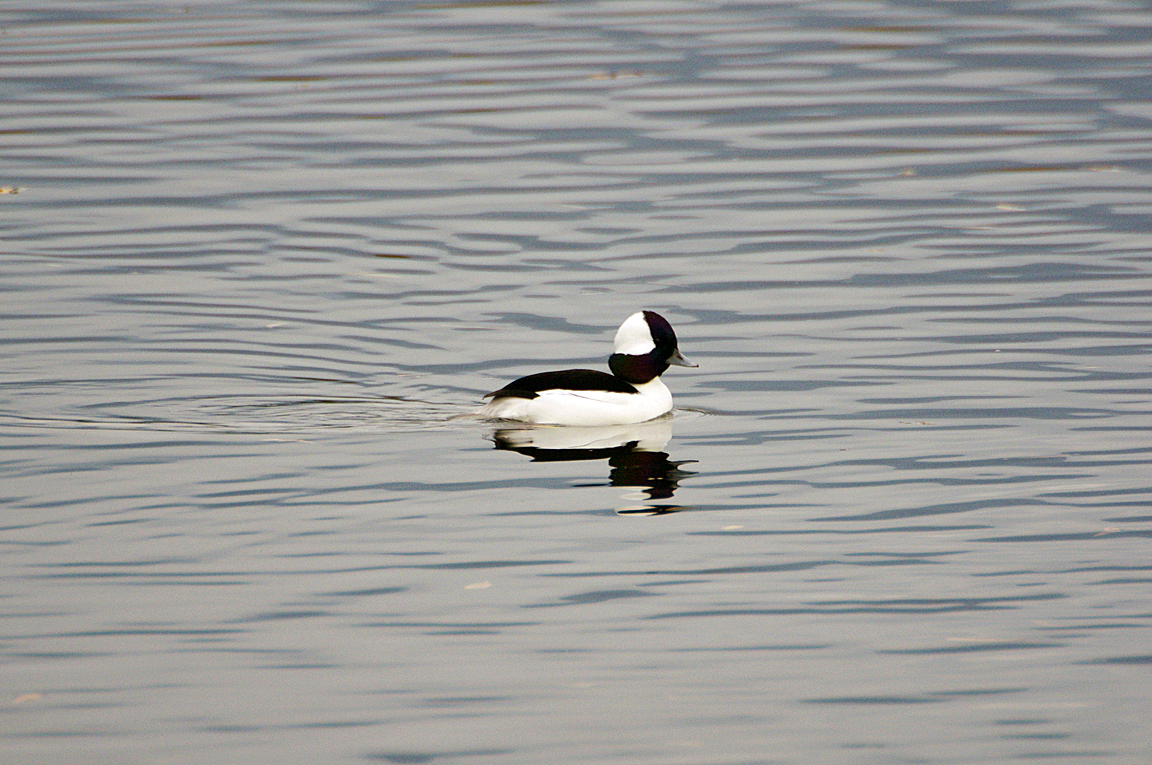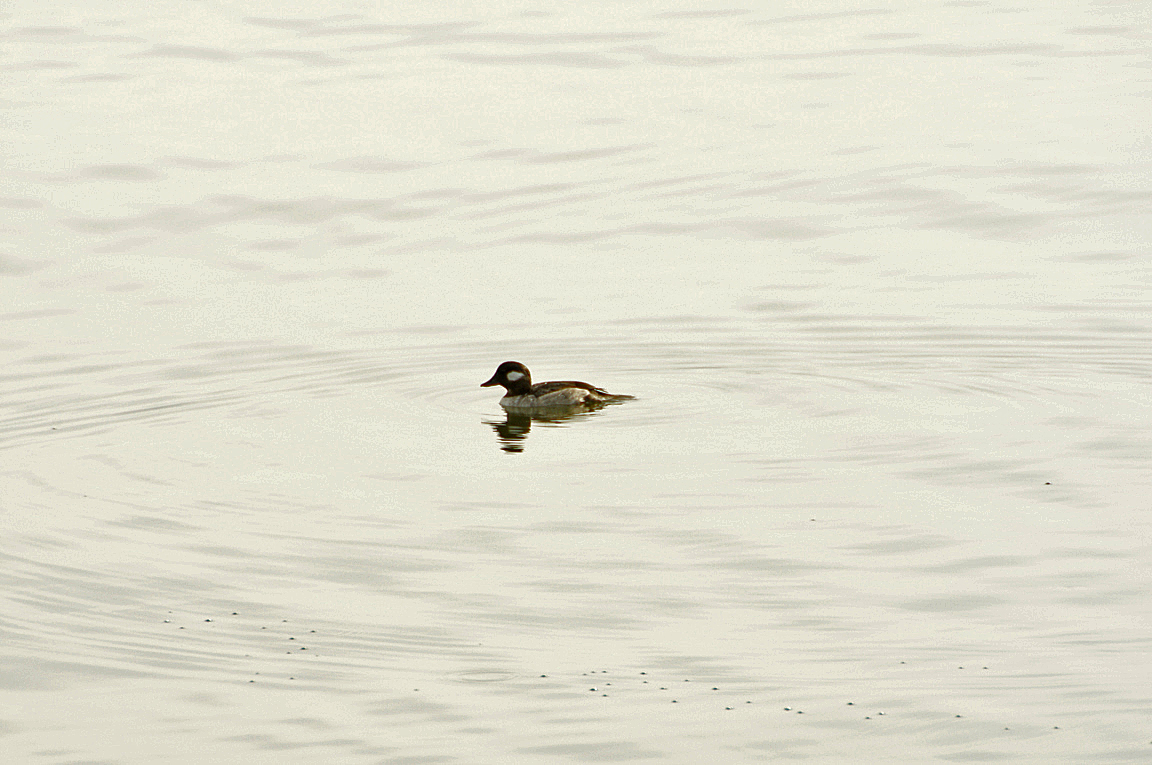|
|
|
 |
Bufflehead
|
| Bucephala albeola | |
The smallest diving duck in North America, the Bufflehead breeds in ponds and small lakes in Canada, and winters in much of the United States. It nests in tree cavities as well as in nest boxes.
Interesting Information
-
The Bufflehead nests almost exclusively in holes excavated by Northern Flickers and, on occasion, by Pileated Woodpeckers.
-
Unlike most ducks, the Bufflehead is mostly monogamous, often remaining with the same mate for several years.
-
The Bufflehead lays eggs more slowly than most other ducks, commonly with intervals of two or three days between eggs.
Description
Adult Description
-
Size: 32-40 cm (13-16 in)
-
Wingspan: 55 cm (22 in)
-
Weight: 272-635 g (9.6-22.42 ounces)
-
Small diving duck.
-
Black-and-white.
-
Small gray bill.
-
White patch on side of head.
-
Rounded head.
-
Dark back.
-
White patch in wings visible in flight.
-
Eyes dark brown.
Sex Differences
Male with white sides, black back and head, and large white patch on head. Female duller and darker, with gray sides and small white patch on head.
Male
Breeding (Alternate) Plumage
Head glossy dark purple-green with large white patch covering the entire back of the head. Black back, white underparts. Wings have a large white patch, including secondaries and coverts.
Nonbreeding (Basic) Plumage
Head not glossy, large white ear patch does not extend around back of head.
Female
Mostly dark, with dark brown head and upperparts; underparts dusky gray. Face has a small white patch in ear area.
Immature
Similar to adult female, with less distinct ear patch.

Photo taken from: The Sibley Field Guide by David Allen Sibley
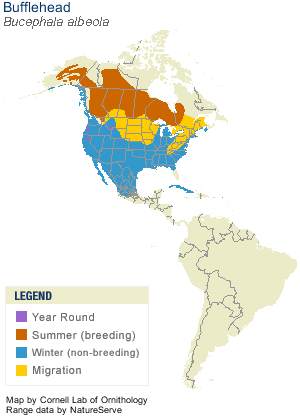
© 2003 Cornell Lab of Ornithology
|
Habitat |
|
|
Behavior |
|
Dives for prey and swallows food underwater. |
|
Food |
|
Insects, crustaceans, and mollusks, as well as some seeds. |
Taxonomy
| Kingdom: | Animalia |
| Phylum: | Chordata |
| Subphylum: | Vertebrata |
| Class: | Aves |
| Order: | Anseriformes |
| Family: | Anatidae |
| Subfamily: | Anatinae |
| Genus: | Bucephala |
| Species: | Bucephala albeola |
Similar Species |
|
|
Bird Sound |
|
Usually silent. Courtship display includes guttural chattering. Male may give squeal or growl in late winter or spring; females give a throaty cluck when seeking nests in summer. |
|
Eggs look like this |
|
Photo taken from: MICHAEL QUINTON/ MINDEN PICTURES/National Geographic Creative |
Videos
Bufflehead
Male and Female Preening
